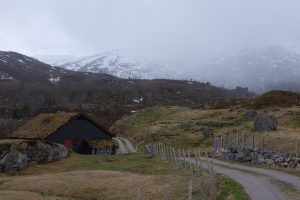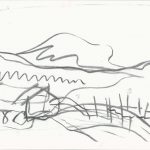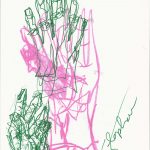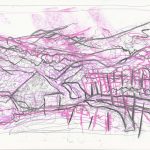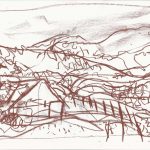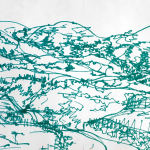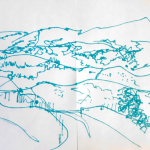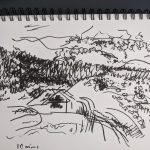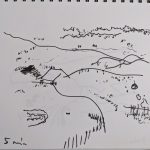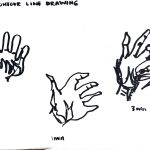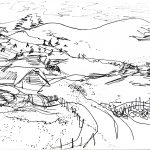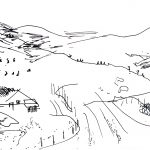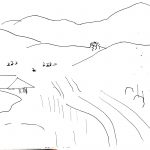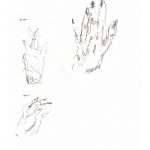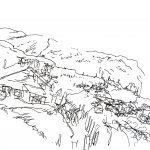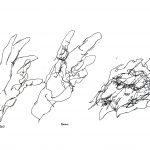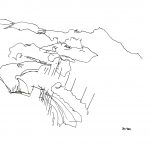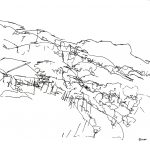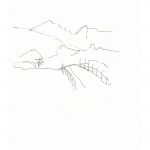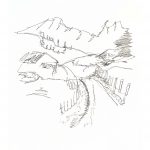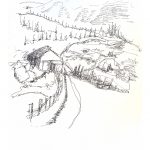introduction
This exercise introduces blind contour line drawing as a method of building stronger hand-eye coordination. Blind contour line drawing is a method of drawing where our page remains hidden from us; we must rely on the translation of an object’s form from our eye, to our mind, to our hand, without being able to self-correct our drawing in progress. This process improves the accuracy of our hand, cultivates awareness of the way our eye wanders over a subject, shares a new way of viewing the subject, and acts as a mechanism for de-skilling. All of these benefits make blind contour line drawing a highly useful exercise, and one that I continuously find myself returning to.
Desired outcomes: accuracy, confidence, efficiency, intuition
Methods: de-skilling, emotive drawing
materials
- 4 sheets of 11×17 paper (or larger)
- any drawing media you’d like, but something fairly broad and responsive to pressure is best. markers, felt-tip pens, conte and charcoal are all great
instructions
- Set up your paper so that you won’t be able to see it while viewing your computer screen. If it is helpful you can drape a light cloth or large paper over your drawing hand to obscure your view. Don’t peek!
- Raise your non-dominant hand and pose it for yourself. This will be your subject.
- On the left side of sheet 1, draw your hand in 30 seconds.
- Re-pose your hand and switch media, if you’d like.
- In the middle of sheet 1, draw your hand in 1 minute.
- Re-pose your hand and switch media, if you’d like.
- On the right side of sheet 1, draw your hand in 3 minutes.
- Look at the landscape photograph I have provided (click on it for full resolution). On sheet 2, draw the landscape in 1 minute. Remember: no peeking at your paper! Expect messiness.
- On sheet 3, draw the landscape in 5 minutes.
- On sheet 4, draw the landscape in 10 minutes.
reflection questions
- What application might blind contour line draw- ings have in your everyday design practice?
- How did your experience change with the different time limits?
- What qualities could you use to describe your resultant drawings? Was there anything that surprised you about them when you first saw them?
